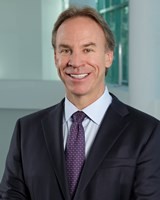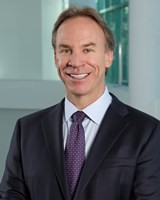Neurosurgery Awareness Month: Dr. Heary

While many neurosurgeons are known for their cerebral work, Dr. Heary focuses heavily on spinal surgery. “I think many times, people presume neurosurgery is just cerebral aneurysms and brain tumors, whereas in fact, the field is much broader”, Dr. Heary, Chief of the Division of Neurosurgery at Mountainside Medical Center says when asked about the importance of Neurosurgery Awareness Month. “I am very involved in spinal surgery myself, as are many neurosurgeons. I’ve been the chair of the spine section for neurosurgery at Mountainside and I’m currently the President of the Lumbar Spine Research Society and just recently became the President of the Cervical Spine Research Society, which are a couple of major spinal organizations in the United States dedicated to the treatment of different parts of the spine,” he shares.
Dr. Heary knows that spinal surgery can be intimidating for his patients, which is why he tries to make them as comfortable as possible. “You do want the patient to be comfortable, they like to know that they’re in the hands of a good surgeon that’s very experienced,” but he also makes a point to be transparent with them about the surgery beforehand. “I typically would have them come in with either a spouse of a sibling or someone who is important to them in their life, like a close friend or relative so they can be in the room when we discuss the different options prior to surgery. Whenever possible, I really try to strongly encourage the patients so that we have multiple people in the room in case there are additional questions that somebody hasn’t thought of and also just to get more sets of ears listening to things. I just want them to understand that it’s a big, serious surgery with prolonged recovery and there are certain risks to undergoing this surgery, so it’s important to have those talks when appropriate,” he says.
Though many people may think that their contact with Dr. Heary ends after surgery, he says there are more appointments afterwards than people typically realize. He notes, “We see people up to a total of two years with clinical and radiographic follow up. It gets increasingly further apart but our typical follow up would be six weeks, three months, six months, one year. Those cases in which spinal fusion was done or instrumentation we typically would be doing x-rays at that time as well to evaluate and make sure that not only is the patient feeling well but that their fusion has taken and is working and is healing what is supposed to be healed.”
Dr. Heary joined the Medical Staff at Mountainside four years ago and is now the Chief of the Division of Neurosurgery at the Montclair Spine Center at Mountainside. “I think it’s a great place to work. I think the overall environment is very pleasant, clean and friendly and we’re able to have state of the art surgery performed which is the ideal environments for good outcomes and good recoveries and I think the overall patient experience is very positive and because of that it’s a really enjoyable place to work,” Dr. Heary shares.
How did Dr. Heary end up in neurosurgery? “I feel tremendously lucky that I had gone to the University of Pittsburgh Medical School, then went into general surgery chugging along, and the director of the neurosurgery program offered me the opportunity to switch out of general surgery and into neurosurgery.” Dr. Heary says that switching into neurosurgery was one of the “best decisions of my life, because it enabled me to switch career directions and I’m thrilled that I did that because I’m doing a job now that I love and I just essentially feel that I got lucky that I landed in what was the best job for me.”





